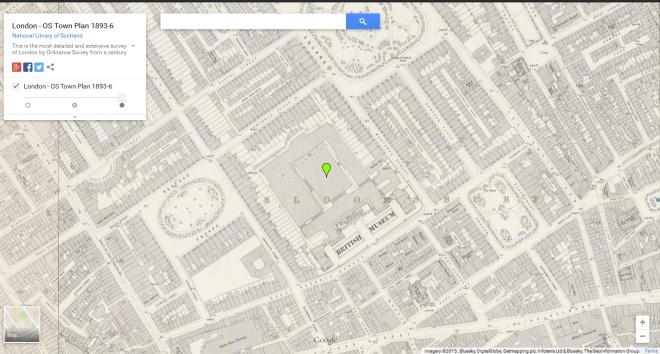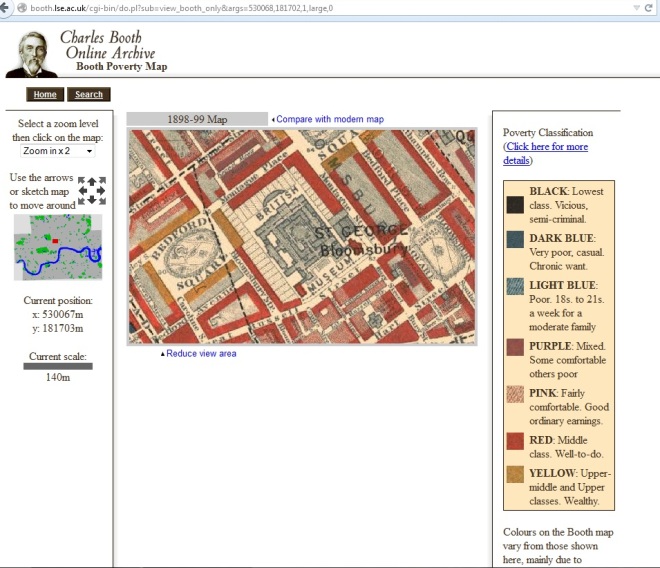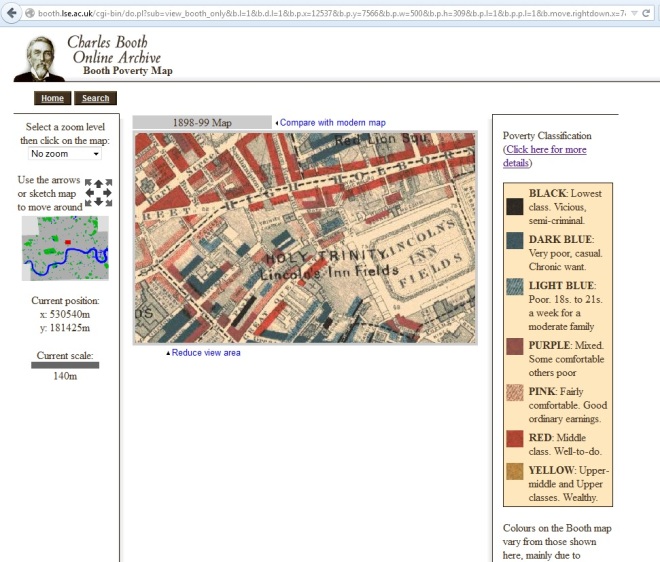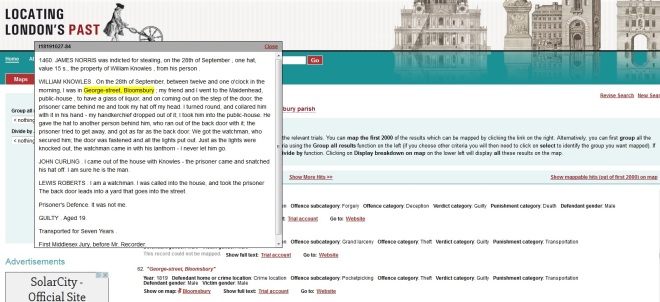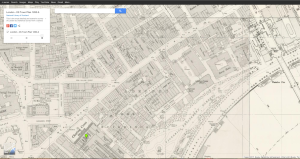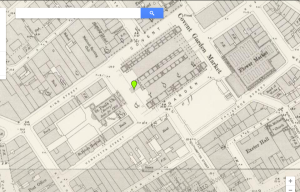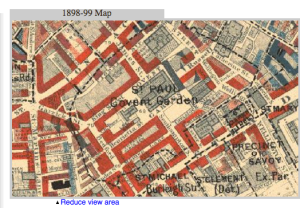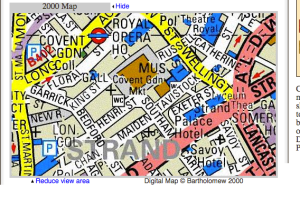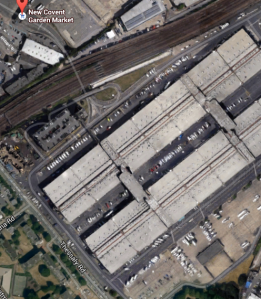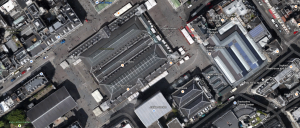Today, the 2 corner shops of Goodge Street on to Tottenham Court Road are Hamburger Union and Cards Galore. One of these 2 modern buildings was likely the corner store where the “row” took place outside of in Sherlock Holmes, The Blue Carbuncle. Maybe the assailants worked at Hamburger Union and were low on deli meat that night. HA!


It is interesting why there was a crime that broke out on the corner of Goodge Street being that this location is within 100 yards of the police station. It is no wonder the assailants fled after Henry Baker broke the window behind him. The Sherlock Holmes text says that the man, Henry Baker, “dropped his goose, took to his heels, and vanished amid the labyrinth of small streets which lie at the back of Tottenham Court Road.” Since the police station was located on Tottenham Court Road, it can be inferred that the assailants and Ryder himself, ran the opposite way across Whitfield and Charlotte Street.
Using the Old Bailey Proceedings Archive, I searched Goodge Street and discovered a prevalent crime was counterfeit coinage. I checked the Charles Booth online archive for the poverty map and observed that Goodge Street is primarily middle class.

According to British History online, Goodge Street used to be a shopping district. If there was coin forgery prevalent in the early 19th century, it is no question Goodge Street was potentially home to similar acts of deceit and defiance. Another search in Old Bailey Proceedings Archive revealed that in 1889, a man broke into a house on Goodge Street and stole 18 pairs of trousers. That is a lot of trousers—what an odd thing to steal. However, the band of assailants in Sherlock Holmes were trying to steal a goose so it doesn’t seem too unreasonable that a similarly oddly chosen burglary item was on the line in real life.
